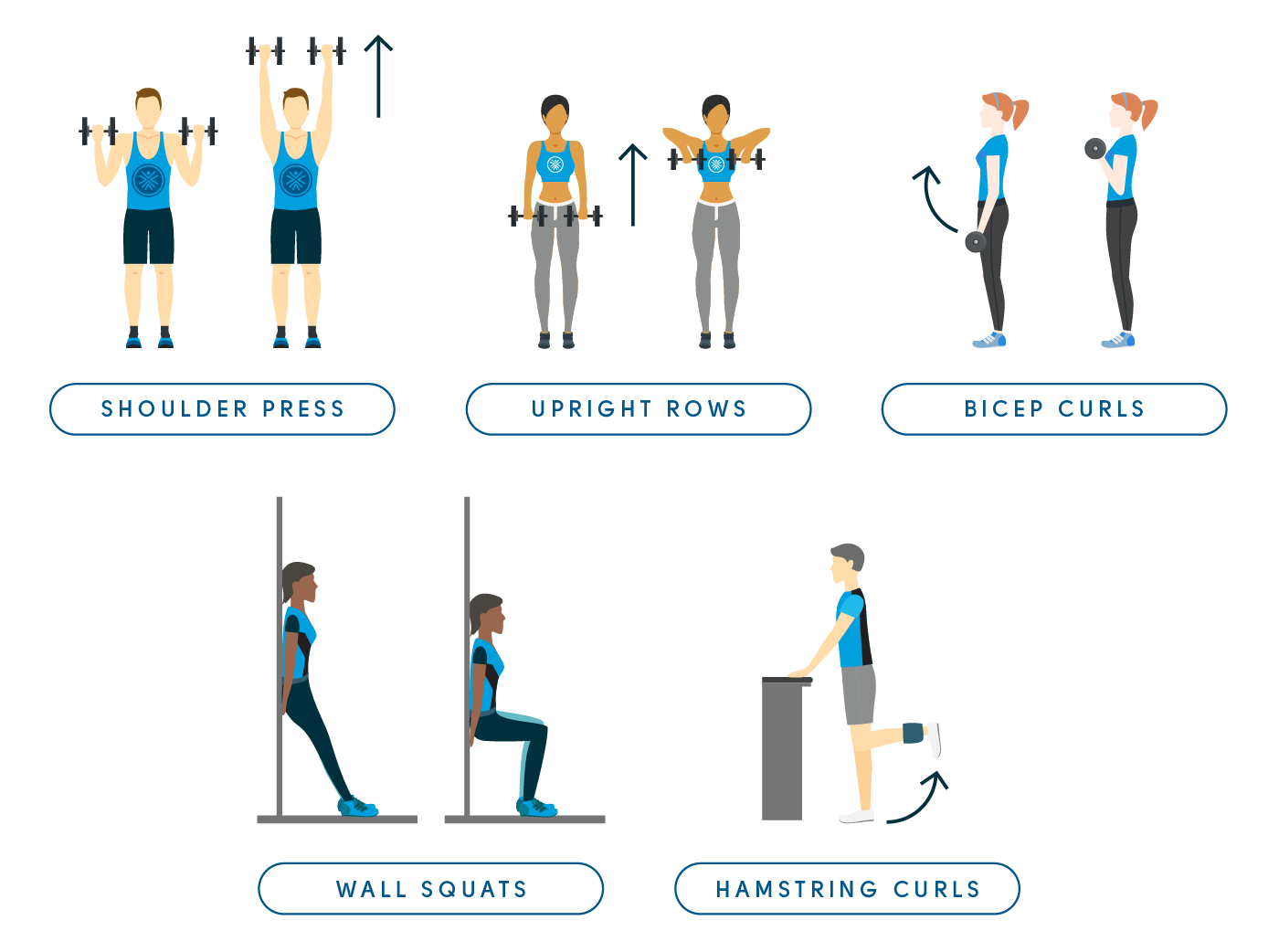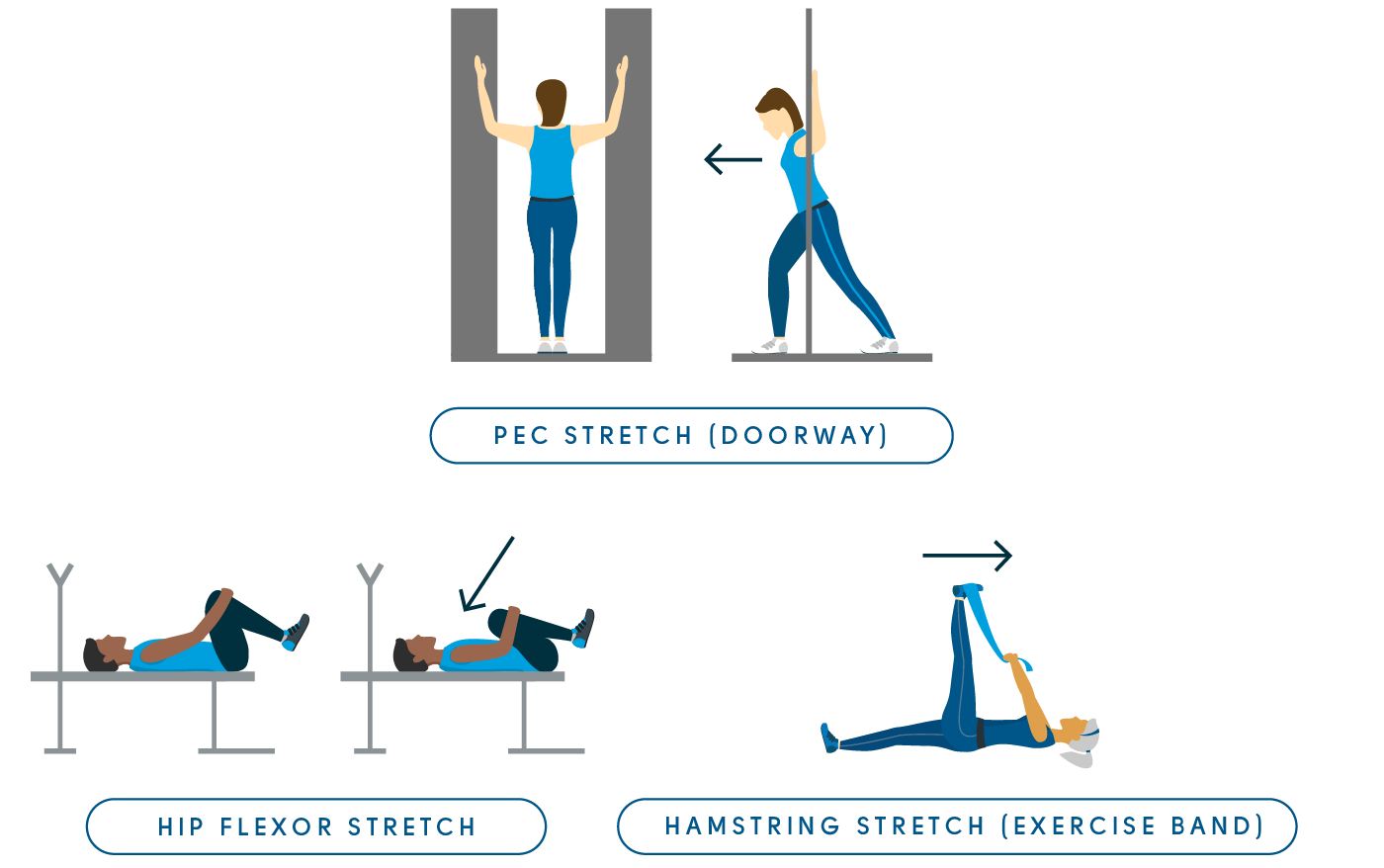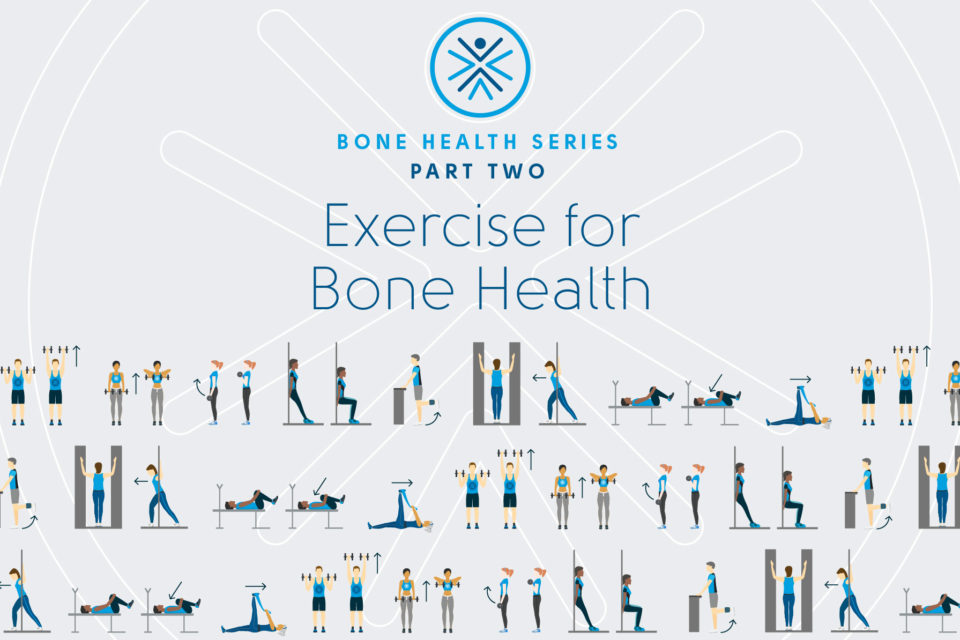Bone Health Series, Part Two of Four: Exercise for Bone Health
41 likes
13,685 views
Comments Bone Health Series, Part Two of Four: Exercise for Bone Health Comments
By: MJ Fegan, PT, DPT, GCS —
Exercise has a positive impact on bone health at every age and is an integral part of treating osteoporosis.
For the most part, bone mass peaks during our 20’s and we see only minimal bone loss through our 30’s. Women will experience a decline in bone mass after menopause and by age 65 or 70, men and women lose bone mass at the same rate. Regular exercise minimizes this bone loss and will increase muscle strength and balance reducing fall risk and the risk for fractures.
There are 5 types of exercise we should perform to help us prevent bone loss. These include:
- Aerobic Weight Bearing Exercises — performance is recommended 30 minutes a day 5 days a week. The two types are: High impact aerobic exercise* which includes: Jogging/running, Jumping Rope, dancing, hiking, and tennis; and Low impact aerobic exercise which includes: walking on a treadmill or outside, and low-impact aerobics. (*If you have osteoporosis and are at risk of breaking a bone, avoid high-impact exercises.)
- Strength Training Exercise — Performance is recommended 2–3 days a week 8–12 repetitions. Here are some examples of strength exercises to include in your workout:
- Posture Exercises — Performance is recommended 1 time per day.
- Chin Tucks — Stand up straight with your shoulders back, draw your chin back so your ears line up with your shoulders
- Scapula Retraction — Stand up straight with the chin tucked and squeeze your shoulder blades (the scapulae) in towards each other/towards the spine. Keep the shoulders down and avoid shrugging up toward your ears.
- Occipital to Wall — Stand with your heels against a wall try to tuck chin and touch occiput (back of head) to the wall while trying to bring your shoulders back.
- In Standing — Try to raise your rib cage off your pelvis. Inhale then stick tail bone out and lift sternum while looking straight ahead.
- Balance — performance is recommended daily holding each position for 30–60 seconds.
- Chair Pose — Stand with the feet together. Inhale lifting your arms overhead. Exhale and bend the knees, squatting down as if you were going to sit on the edge of a chair. Bring your weight to the heels of the feet.
- Tandem balance — Stand with one foot in front of the other and hold this position.
- Tree Pose – Stand up straight and shift your weight to one foot. Bend the opposite knee and lift up alongside your inner thigh. Do not rest your foot against your knee, only above or below it. If this is too difficult, you may keep your toe on the ground. Adjust your hips so your right hip and left hip are aligned. Inhale as you extend your arms overhead, reaching your fingertips to the sky. Rotate your palms inward to face each other.
- Heel-to-Toe Walk – Like you are walking a tight rope.
- Flexibility-Stretching — Performance is recommended 1 time a day for 2–3 reps with 30–60 second holds


If you have low bone mass (osteopenia or osteoporosis) you should avoid the following activities. These movements can cause fractures:
- Activities that involve bending or hunching your back.
- Twisting your spine to a point of strain, especially when in a standing or seated position.
- Sudden jerking or rapid movements.
- Poses that bear weight directly on the neck, such as headstand and shoulder-stand positions.
- Lifting heavy weights.
- Activities such as jumping or high-impact aerobics.
Other Important Tips:
- If you are age 40 or older, check with your doctor or physical therapist before you begin a regular exercise program.
- If you’re uncertain you can perform an activity safely, talk with your physical therapist to help you learn which exercises are safe and appropriate for you.
- Consult your Rehab Concepts physical therapist to come up with an individualized exercise program. We can educate you on the proper progression of activity, how much weight to use, and how to correct your specific poor posture habits to name a few.

